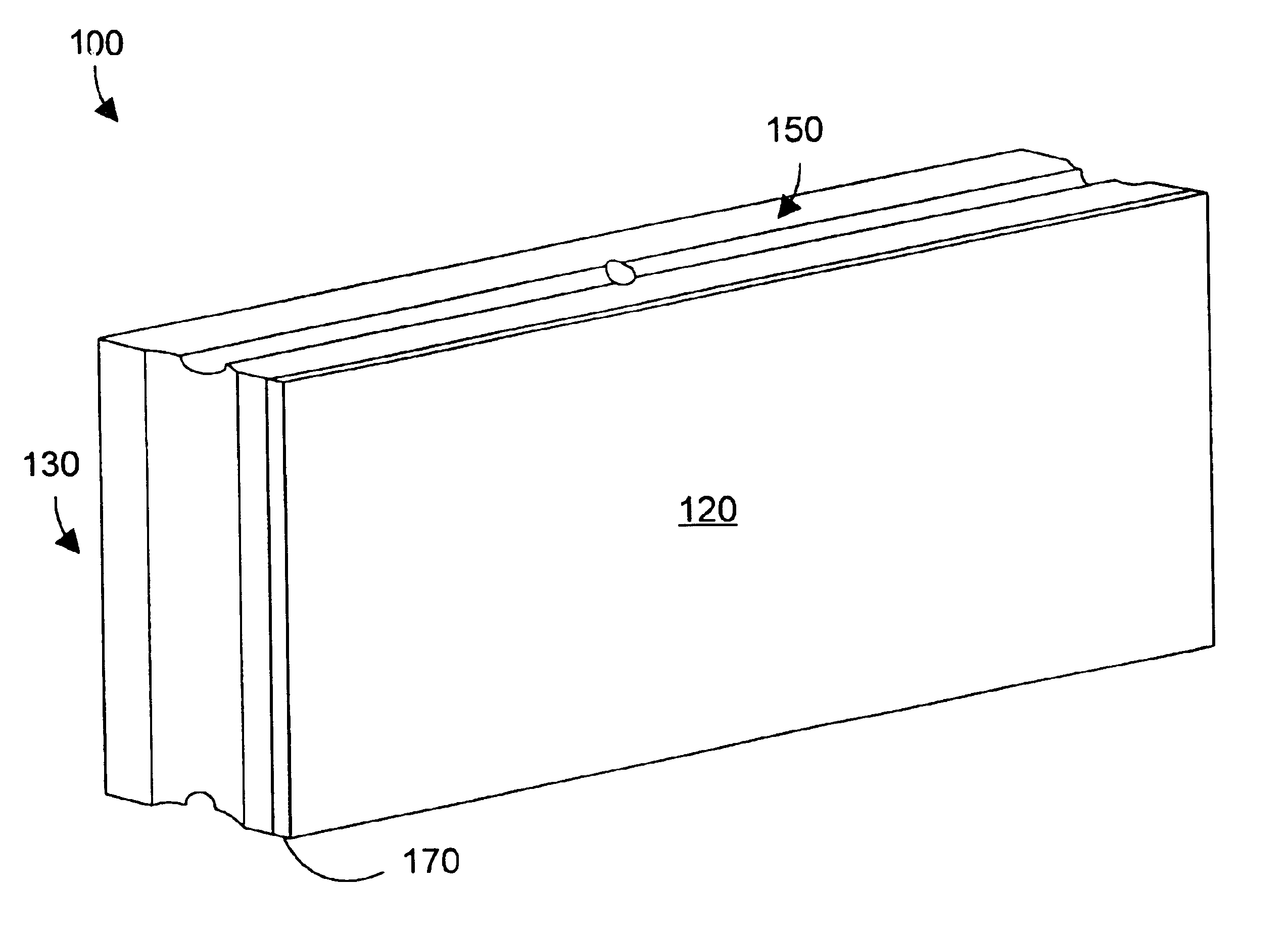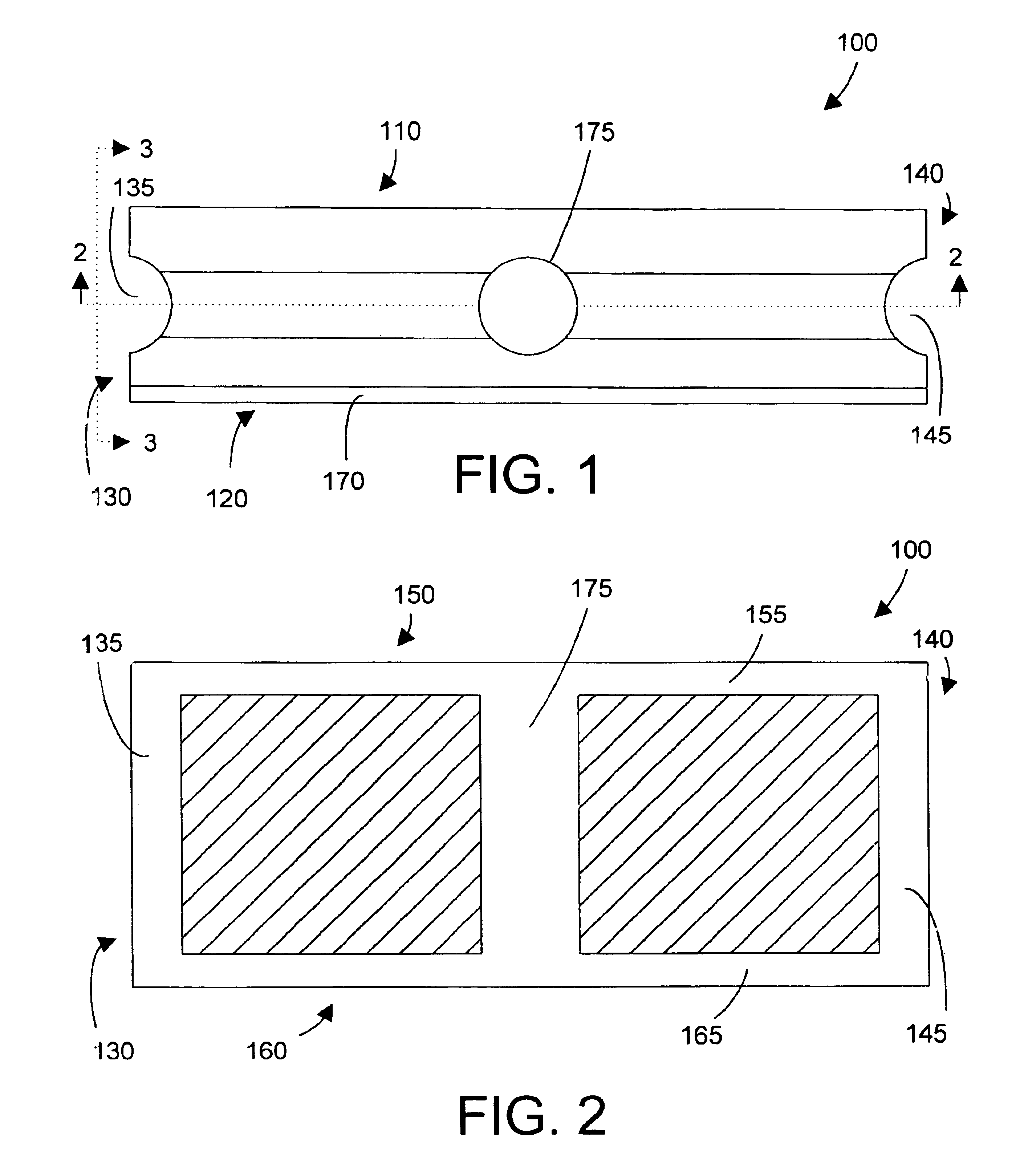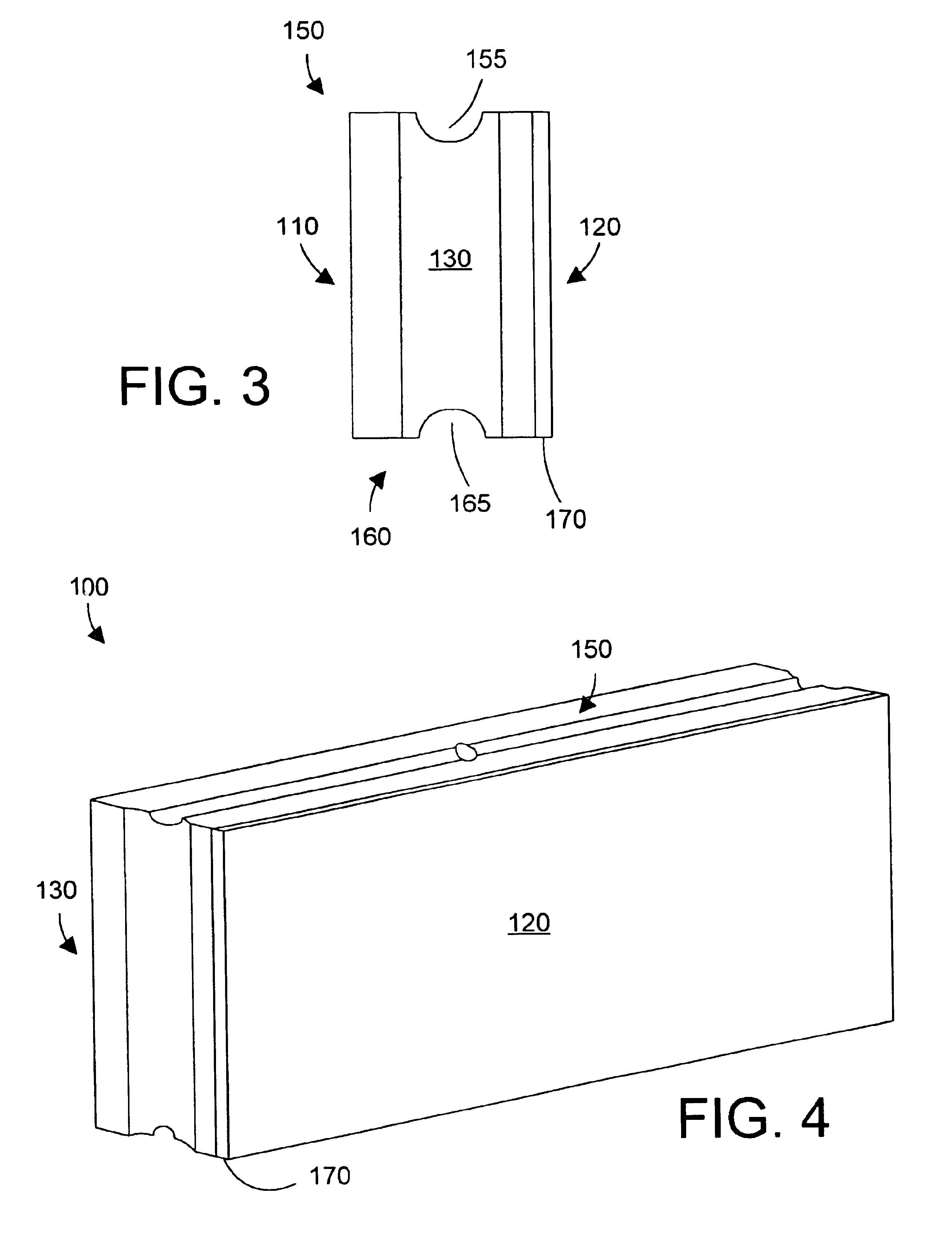Building block with a cement-based attachment layer
a technology of building blocks and cement, applied in the field of construction materials and techniques, can solve the problems of time-consuming nailing of covering materials to furring strips, concrete blocks are too hard and brittle to allow commonly used nails or screws, and concrete blocks are too hard and brittle to allow furring strips or studs to the block wall, etc., to achieve the effect of convenient attachmen
- Summary
- Abstract
- Description
- Claims
- Application Information
AI Technical Summary
Benefits of technology
Problems solved by technology
Method used
Image
Examples
Embodiment Construction
The building block of the present invention allows any suitable material to be directly fastened (e.g., screwed, nailed, or stapled) to it. A cement-based attachment layer on the block allows fasteners to be directly attached to the block.
Referring now to FIGS. 1-4, a building block 100 in accordance with the preferred embodiment includes a first exterior surface 110, a second exterior surface 120, a first side surface 130, a second side surface 140, a top surface 150, and a bottom surface 160. Either or both of the first exterior surface 110 and the second exterior surface 120 include an attachment layer 170. For purposes of illustrating the attachment layer 170 in the figures, attachment layer 170 in FIG. 1 is shown on exterior surface 120. Note, however, that attachment layer 170 may be located on either or both of the exterior surfaces 110 and 120.
Each of the side surfaces 130 and 140, the top surface 150, and the bottom surface 160 include corresponding substantially semi-cylin...
PUM
 Login to View More
Login to View More Abstract
Description
Claims
Application Information
 Login to View More
Login to View More - R&D
- Intellectual Property
- Life Sciences
- Materials
- Tech Scout
- Unparalleled Data Quality
- Higher Quality Content
- 60% Fewer Hallucinations
Browse by: Latest US Patents, China's latest patents, Technical Efficacy Thesaurus, Application Domain, Technology Topic, Popular Technical Reports.
© 2025 PatSnap. All rights reserved.Legal|Privacy policy|Modern Slavery Act Transparency Statement|Sitemap|About US| Contact US: help@patsnap.com



